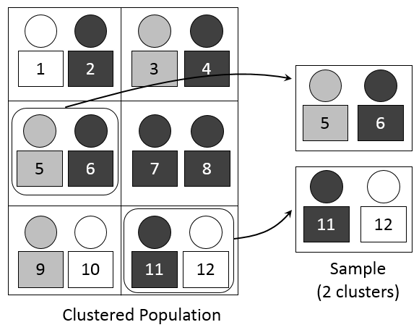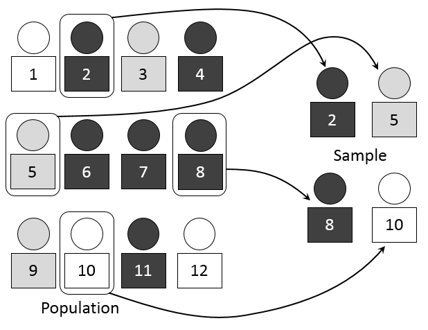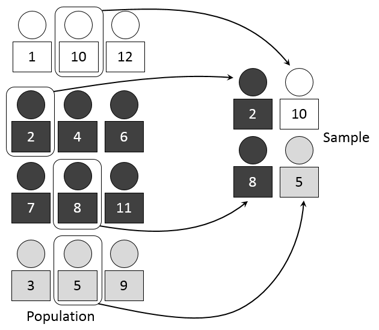This post marks the second part of our series on sampling methods. This second installment will describe non-random sampling methods.
Remember: we talk about nonrandom sampling when we don’t have access to a full list of the individuals who form the population (a sampling frame) and thus don’t know the probability that a given individual will be selected for the sample.
The main consequence of this lack of information is that we can’t generalize the results with statistical precision.
Availabilty Sampling
Availability sampling is used quite frequently. It involves selecting a sample from the population because it is accessible. That is to say, individuals are selected for the research not because they meet some statistical criterion, but because they are readily available. This convenience usually translates to easy operation and low sampling costs. The trade-off, of course, is that it is impossible to use the results to make general assertions about the population with any sort of statistical rigor.
Suppose that we want to know Chilean college students’ thoughts on politics. To get a random sample, we would need a list of all the students in all of the universities in Chile so that we could randomly select a group of individuals and interview them. To get an availability sample, on the other hand, we might meander over to the three universities closest to where we live and survey however many individuals agree to participate when we catch them between classes.
The limitations of this sampling method are obvious. In our example, different universities might correlate with different social groups and political opinions. What’s more, if I choose students from three specific universities and survey them in the morning, their opinions might differ from their afternoon counterparts (who might be working part-time jobs in the morning and taking classes in the afternoon).
Does that mean that the results from an availability sampling are totally irrelevant, and that they don’t tell us anything about a population? No exactly. If we have good reason to believe that selecting for convenience won’t skew our results, we might get a good image of the population studied. The problem is that we have no way of knowing exactly how good that image is: since we can’t use statistical tools such as margins of error and confidence intervals to measure our results with any sort of precision. Those attempting to draw conclusions from the study will have no choice but to trust in the selection criteria established by the researcher.
Clinical Studies
But we shouldn’t write availability sampling off as a useless method. In fact, it is used successfully in many settings, such as clinical studies with volunteers. In these studies, individuals with certain physical characteristics volunteer to participate in some sort of research or treatment. Clinical investigators who use the method assume that any individual who possesses a particular characteristic (a person with diabetes, for example) will be representative of the population. In other words, variables such as whether or not an individual sees the call for volunteers, whether or not they choose to participate and where they are from do not affect the results of the study.
Unlike the study on Chilean students, clinical studies are able to use availability sampling and have no reason to expect that this will lead to biased results. The key is evaluating whether the convenience of a selection will truly introduce bias.
Pilot Studies
Pilot studies are another context in which this sort of sampling is employed. At the beginning of a project, an availability sample can offer information on the trends and results that we can expect from a random sample. We can use this information to modify our approach to the study before starting with a more expensive sampling process.
Adavantages & Disadvantages
Given its characteristics, the pros and cons of this sort of sampling are clear.
The main thing it’s got going for it is its convenience. It is simple, cheap and fast. It can offer us valuable information in a lot of circumstances, especially when there are no fundamental reasons to think the individuals at hand would be any different from the individuals who make up the population as a whole.
Its greatest faults are the lack of representation, the impossibility of making statistical claims about the results and the risk of running into bias due to the sampling criteria used. At worst, our sample might be compromised by systematic bias with respect to the total population, leading to distorted results.
Margin of Error & Confidence Level
This is something we talked about in an earlier post. Using availability sampling and expressing the results of the study alongside a margin of error and a confidence level is incorrect. That said, people do it.
If we choose to calculate such a margin of error, we should be sure to indicate that it does not apply to the sample used, but to a simple random sample of that size. In any case, whenever we use an availability sample, the results ought to be accompanied by a description of how we obtained our sample so that readers can evaluate the credibility of the results.
TABLE OF CONTENTS: Series on sampling






